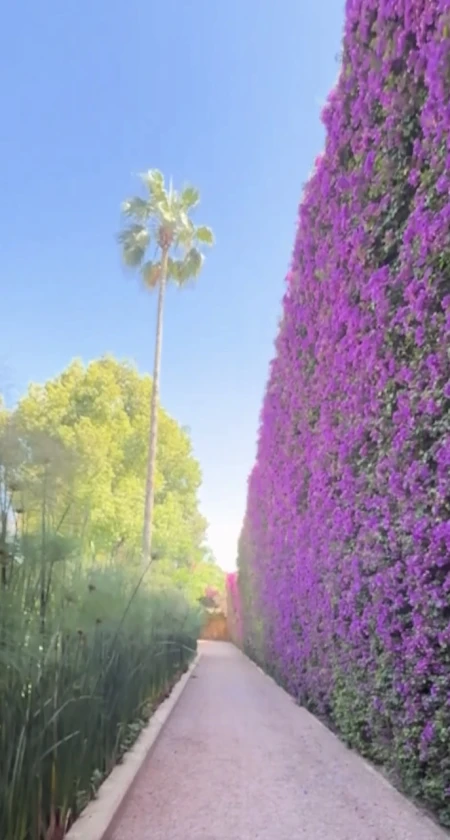
I am in Marrakech, in the garden of the legendary La Mamounia hotel. Eight hectares of garden artistry, composed of over 1,200 plant species: centuries-old olive trees, majestic palms, fragrant kitchen gardens, and serene water lilies. And in the midst of it all: an eight-meter-high wall from the 12th century, overgrown with brilliantly violet Bougainvillea spectabilis. Originally, the garden was a gift from the Sultan to his son Moulay Mamoun – today it is one of the most beautiful green oases in North Africa, meticulously maintained by 70 gardeners.
Behind me: my beloved bougainvillea. It's the one that blooms most vibrantly – and it's just getting started. What many don't know: The spectacular violet we admire aren't actually flowers, but bracts. They attract pollinators – a typical principle of many plants from the Southern Hemisphere. The actual flowers are small, inconspicuous, and white, hidden among the colorful bracts.
What you see here is magnificent: An eight-meter-high wall, completely covered with bougainvillea. These living walls create not only visual beauty but also a microclimate – a valuable contribution in hot Marrakech, where the thermometer regularly climbs above 40 degrees Celsius in summer.
Bougainvilleas need water. And there's plenty of it here – fed from the Atlas Mountains. The water is distributed and collected through an ingenious historical system – a brilliant example of sustainable garden irrigation based on the Arabic Khettara technique.
On the other side of this Bougainvillea stands a truly remarkable plant: Papyrus (Cyperus papyrus). It has shaped human history — our word “paper” comes from the Greek papyrus.
Papyrus grows exclusively in water — specifically, in standing or very slow-flowing bodies of water. Only there does it thrive. As early as 3,000 BC, it was used in ancient Egypt: the stems were cut, layered, pressed — and the result was a writable material.
Remarkably, papyrus is incredibly durable. Scrolls from the time of the pharaohs, over 4,000 years old, have survived to this day.
But back to the bougainvillea: I love it because it's a symbol of beauty. In the Mediterranean region, it only grows south of the Alps – a bit also around the northern Italian lakes like Lake Maggiore. But here in Marrakech? Full throttle. Here it feels at home and shows what it's capable of – a perfect interplay between plant and place.